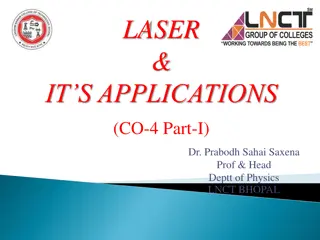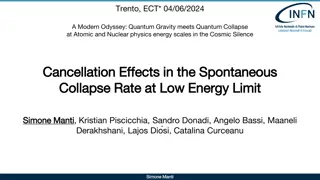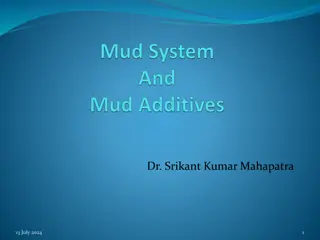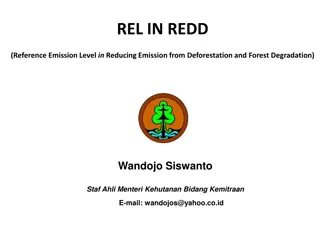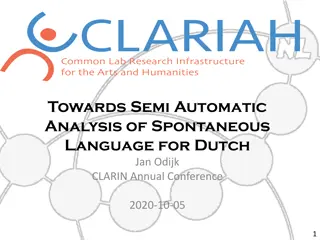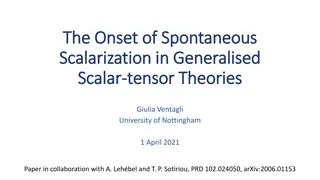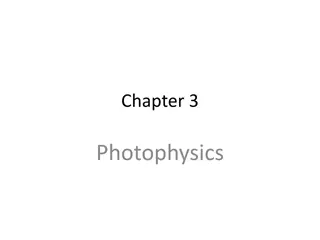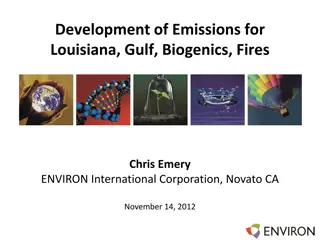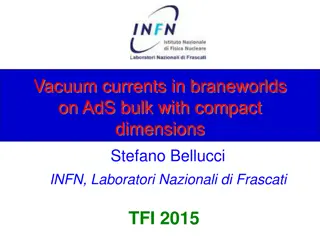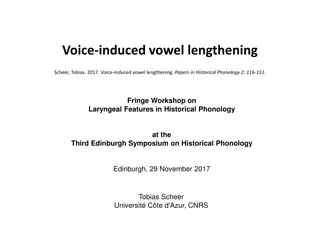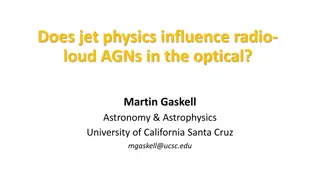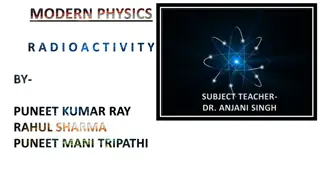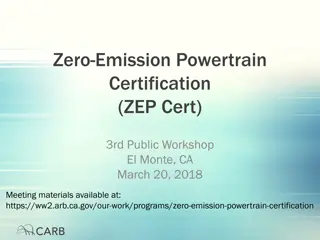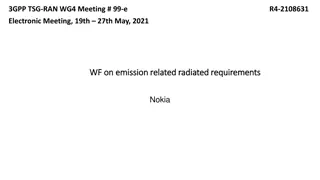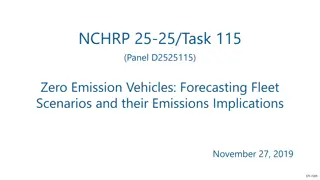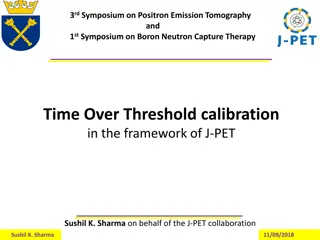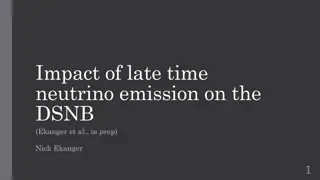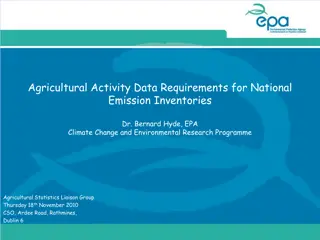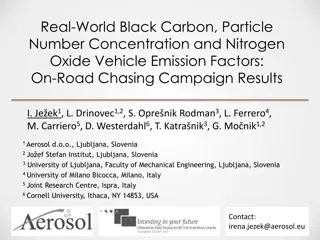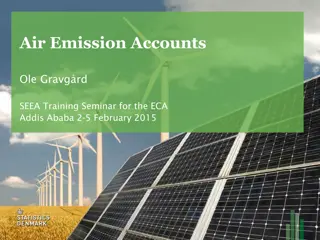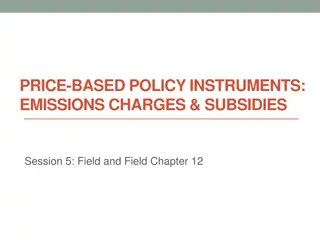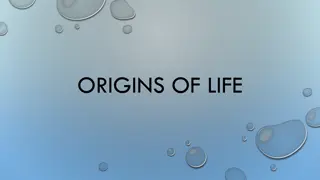Exploring Inhibited Spontaneous Emission in Physics
The study delves into inhibited spontaneous emission in physics, focusing on the phenomena, experimental setups, and effects like the Purcell effect. It discusses using waveguides and Rydberg atoms for this purpose, as well as the density of modes and states in free space and cavity configurations. The content also touches on waveguide modes, cutoff frequencies, and detector considerations for inhibited spontaneous emission experiments.
Download Presentation

Please find below an Image/Link to download the presentation.
The content on the website is provided AS IS for your information and personal use only. It may not be sold, licensed, or shared on other websites without obtaining consent from the author. Download presentation by click this link. If you encounter any issues during the download, it is possible that the publisher has removed the file from their server.
E N D
Presentation Transcript
Inhibited Spontaneous Emission Inhibited Spontaneous Emission Eran Gazit & Ayal Beck Daniel Kleppner Phys. Rev. Lett. 47, 233 Published 27 July 1981
Spontaneous Emission ? |? > |? > 1 2< ? ????|? > 2 2?=1 ? = ?(?) ? = Fermi Golden Rule ? Probability to find excited atom ??? = ? ?
Density of modes in free space ?2= ?? 2+ ?? 2+ ??2 ? = ? 4 3??3 2?3 ? ?? ??=8??2 ????? =1 ? = 2 ?3 ?
Density of states in a cavity For a cavity tuned around ? with a very high quality factor of Q=? is approximately: 1 ???? ??? ?? ??the d.o.s If we take, without loss of generality, Vol=(? ???????=8?2 2?)3we get: ?3? ????? The Purcell effect: Whenever a cavity satisfies the properties mentioned before, we get an enhanced spontaneous emission rate: ?= 0? *Graph in courtesy of Slava
Inhibited spontaneous emission It is also possible to suppress spontaneous emission For >2d (with d being the cavity length) we will get no spontaneous emission!
Setting an inhibited spontaneous emission experiment Due to technical reasons, we resolve to using waveguides =1 ? Detector ? = ? We will use Rydberg atoms for this experiment
Waveguide d ? TE Modes Transverse Electric ?? ? ? ? 0 d ? ?? TM Modes Transverse Magnetic ? ? ? 0
Waveguide TE Modes TM Modes m m = j z cos H E x e m = j z sin E E x e m 0 y d 0 y d 2 2 m 2 2 m = 2 k = 2 k m 2 d m 2 d = 3 , 2 , 1 , 0 ... m 3 , 2 , 1 = ... m
Cutoff Frequency ? ? ???? ?? ???? ? < 2? 2 2 2? ? ? ? ?1= ?? ?????? ????????? ?0= ? =2? ?? ???? ??? ??? ?????? ?
Density Of Modes In A Waveguide ? ?1(?) 2 ?2 ?1 ? ?(?) ? 2 ?2 ?? Inhibited Spontaneous Emission - Daniel Kleppner Phys. Rev. Lett. 47, 233 Published 27 July 1981
TE and TM Emission ? ? ?? ?? ? ???????????? ? ???????????? Cavity Quantum Electrodynamics - Serge Haroche, Daniel Kleppner Physics Today 42, 1, 24 (1989)
Experiment 1 Detector Waveguide ?.? ?? ?? ?? |? > ? = ?.??? ?? |? >
Results ?????? ?? ????? ??????? ????? Wavelength Wavelength Cavity Quantum Electrodynamics - Serge Haroche, Daniel Kleppner Physics Today 42, 1, 24 (1989)
Experiment 2 Cavity Quantum Electrodynamics Serge Haroche, Daniel Kleppner Physics Today 42, 1, 24 (1989)
Conclusions Spontaneous emission can be inhibited under the right conditions We showed the possibility of inhibited spontaneous emission through classical arguments


